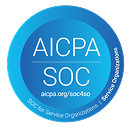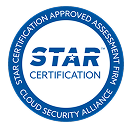In this session of Propel 22, Matthew May, Go-to-Market advisor, and ScaleUp Strategist at Insight Partners shared his insights on accelerating onboarding outcomes with value mapping.
The session focused on:
- Why outcomes matter
- Value definition: The jobs-to-be-done framework
- Value delivery: Value gap mapping in onboarding
- Running a value mapping session
1. Why outcomes matter: The “Jobs Theory”
Harvard marketing professor Theodore Levitt is famous for saying, ‘People don’t want to buy a quarter-inch drill. They want a quarter-inch hole!”
Another way to look at it is as author and former Harvard Business School professor, Clayton Christensen, did when he said, “When people find themselves needing to get a job done, they essentially hire products to do that job for them.”
This notion of products being ‘hired’ for a specific job is widely known as the “Jobs Theory.”
2. Value definition: The jobs-to-be-done framework
Jobs Theory can be used to accelerate onboarding outcomes via the Jobs Framework. It has two major components: the job-to-be-done and a desired measurable outcome, as illustrated below.

3. Pro tips to define jobs-to-be-done
- Ensure a clear start and stop (avoid terms such as manage, guide, maintain, help, support, etc).
- Do not mention or suggest a solution.
- Don’t confuse jobs with outcomes. Jobs are objectives or goals and outcomes are results.
- Do not equate ‘main jobs’ with to-dos. For example, ‘go to the grocery store’ is not a main job, ‘get groceries for the week’ is.
- Try a value promise that combines the job and the outcome. Eg: Protecting information from exposure to minimize the loss of confidential data.
4. Value delivery: Value gap mapping for onboarding
The Value Gap Map is an overlay of Jobs Theory on the key inflection points in the customer experience. Value gap mapping focuses on identifying the gaps for customers to understand what value needs to be provided to the customer.
The map is a matrix that begins with the customer whose experience you want to map. Though value gap mapping can be done for personas and profiles, involving actual customers in such an exercise can be hugely beneficial. Or, you could complete a Value Gap Map for a customer with a team that knows that customer best.
If you would like a digital copy of the Value Gap Map canvas and have a Mural account, you may click here to generate a Creative Commons-licensed copy in your own instance. For a printable PDF under the same license, head here or create your own from within Mural using the Export function.

How to use the value gap map
- Work horizontally across the top of the Value Gap map, left to right, mapping the key Jobs-to-be-Done and Desired Outcomes that the customer wants to use your product/solution for. (In most cases, you’d arrive at one or two main jobs and a few supporting ones)
- Once the top row is complete, work vertically to complete all six left-hand categories for each job.
- Focus on one job at a time to avoid defaulting to old ways of thinking about a problem or experience.
5. Running a value mapping session: Sample objectives, outcomes, and process


A value mapping session is typically three hours long (carried out cross-functionally) with either:
- People who know the personas best,
- Super users, or
- The actual customer
6. The best stage for value mapping in onboarding
Value gap mapping sessions during onboarding kickoff meetings can help understand exactly what customers are looking to achieve, and how you can provide that value, right at the start of the project.















